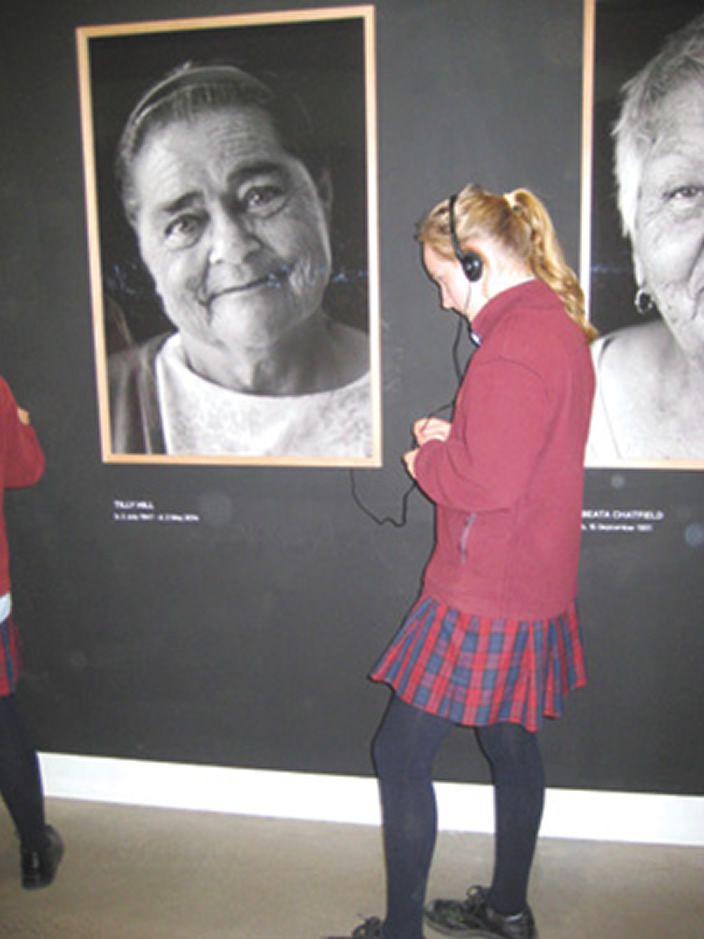
Students and staff at St Marys Catholic School in Wellington NSW have new insights into the stories of Aboriginal people in their area following an exhibition by former student turned photographer Asher Milgate.
The Survivors exhibition was held at Western Plains Cultural Centre in Dubbo and at Wellington earlier this year. It featured photographic portraits of 18 elders and ‘elders in waiting’ paired with a short audio recording in which they recall their past.
Asher Milgate’s mother Maureen is a maths teacher and IEU Rep at the K-10 school. One of the people featured in the Survivors exhibition is Denise Kelly, who has been AEW at the school for 18 years, and a long time family friend of the Milgates.
Denise is a member of the IEU’s Aboriginal and Torres Strait Islander Working Party (see story page )
Maureen said the students had initially asked ‘why did he do it’, but once they had attended the exhibition they were amazed by the stories.
“Looking into people’s eyes as they tell their stories was a very moving experience. Asher wanted the stories to live on forever, and I think the exhibition did that,” Maureen said.
School Principal Simon Price said he did not fully understand what had happened to Denise and other Aboriginal people prior to the exhibition.
“This has been a really emotional experience for the students and staff. I didn’t understand why people were so angry until I heard these stories.”
For example when Denise took Holy Communion she and other Aboriginal people were forced to use a side entrance to the church, sit at the back and use tea towels as veils. They were not invited to celebrations at the town hall, but sent straight back to the Namina Mission.
Simon said the way Aboriginal people relate to the Catholic Church is affected by the past.
“At this school we have an ongoing focus to tackle racism and we have a lot of events that Denise organises, including NAIDOC Day, Sorry Day and Deadly Day.
“The priests have been positive about re-introducing Aboriginal culture into the school.”
Since the excursion to Survivors, students look at Denise with new eyes.
Maureen said: “There was a real atmosphere to that exhibition. It was presented in a tin, like the sheds the people used to live in. Very moving.”
In the exhibition Denise talks about life on the mission and children being taken away.
All the mission children learnt to swim so they could escape to the other side of the river when police came to take children away.
“We thought it was just a game,” she said.
Denise describes how her mother got food vouchers and was only allowed in one shop in Wellington, “because blacks were excluded elsewhere.”
“People did not know who their families were, who they were related to, because they were taken away so young.
“I thought Asher was joking when he first asked me to be in the exhibition. I didn’t see myself as an elder,” Denise said.
“I’d never been allowed to speak up about growing up on a mission before, about having to hide from the white men. It was hard to talk about it.
“But he’s given us a voice and allowed people to listen to our stories.”
Asher said of the exhibition: “I have embarked on a work of art that will immortalise the Wellington of times gone by; one which I believe will carry great overarching significance for the town. Moreover, it’s a work that I believe, by reflecting the town’s rich history, will engender a greater sense of self among its Aboriginal population”.
Survivors is accessible online: www.survivors.net.au


































































































































